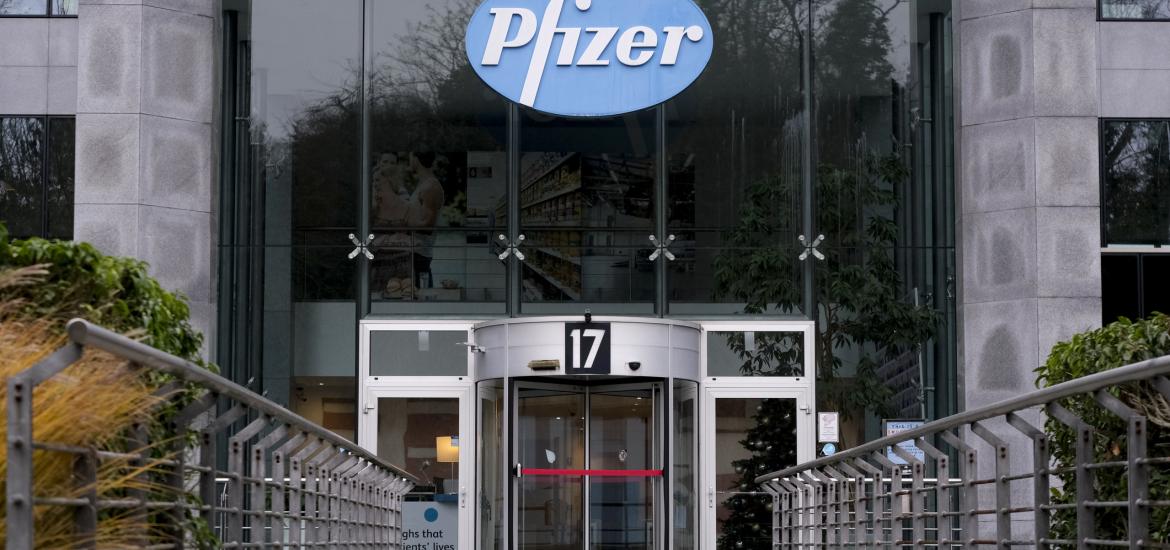
Pfizer isn’t done with CD47
Maplirpacept features among key biologicals and small molecules highlighted at Pfizer’s oncology update.
Maplirpacept features among key biologicals and small molecules highlighted at Pfizer’s oncology update.

The blow-up of Gilead’s magrolimab has raised doubts about the viability of targeting the CD47 pathway, but Pfizer isn’t giving up just yet. The latter company’s “oncology innovation day” yesterday highlighted the SIRPα fusion protein maplirpacept among a select group of R&D assets of special interest.
The project, which Pfizer acquired through the $2.3bn takeover of Trillium, was thought to be on a back burner after not even being mentioned in Pfizer’s most recent R&D presentation. Yet the group is pressing ahead after all, and maplirpacept features in the post-Seagen pipeline along with ADCs, other biologicals and inhibitors of CDK2, CDK4, KAT6 and EZH2.
That said, Pfizer didn’t repeat its 2022 claim that CD47 represents a $3 billion-plus peak year sales opportunity, and yesterday’s presentation didn’t mention the second Trillium-derived asset, a separate SIRPα fusion protein called ontorpacept.
For maplirpacept the group highlighted haematological cancers, especially acute myelogenous leukaemia, as well as a future combo with its anti-BCMA T-cell engager Elrexfio. Maplirpacept is also in a phase 1/2 trial in ovarian cancer, but this appears not to be an important focus.
Selected non-ADC biologicals in Pfizer's R&D pipeline
| Project | Mechanism | Status | Note |
|---|---|---|---|
| Sasanlimab | Anti-PD-1 MAb (SC) | Ph3 in BCG-naive non-muscle invasive bladder cancer | Data expected H1 2025 |
| Maplirpacept | SIRPα fusion protein | Ph2 in haematology; 1L AML trial planned; possible future combo with Elrexfio | From $2.3bn acquisition of Trillium |
| PF-08046040 | Anti-CD70 MAb (non-fucosylated) | Ph1 in MDS/AML | From Seagen, earlier coded SEA-CD70 |
| PF-08046052 | Anti-EGFR bispecific γδ T-cell engager | Ph1 in NSCLC, colorectal, head & neck | From Seagen (licensed from Lava), earlier coded LAVA-1223 |
| PF-07329640 | αLTβR MAb | IND submitted; ph1 to start Q2 2024 | Tetravalent antibody activating LTβR receptor to induce tertiary lymphoid structure formation & maturation |
| Unnamed | LILRB1/2 MAb? | Ph1 to start enrolment 2024 | – |
Source: 29 Feb Pfizer oncology innovation day & OncologyPipeline.
The non-ADC biologicals pipeline of interest also includes two Seagen-derived assets: the non-fucosylated anti-CD70 MAb PF-08046040 and the EGFR-targeting γδ T-cell engager PF-08046052.
Lava Therapeutics will be relieved that the latter project remains in the pipeline. That asset was originated by Lava under the code LAVA-1223, and Seagen licensed it in 2022 for $50m up front; successful development could trigger up to $650m more, plus royalties, and such payouts remain in play as long as Pfizer continues development.
Targeted
Pfizer’s oncology day also featured numerous targeted small molecules, and perhaps the most interest here will fall on the company’s breast cancer portfolio.
While the group markets the CDK4/6 inhibitor Ibrance, a recent trend has seen it focus on individual CDK subtypes, and the CDK4 inhibitor atirmociclib is one way Pfizer reckons it can get around the problem of neutropenia, thought to be driven by the inhibition of CDK6. Next up is a move into phase 3 in the front-line setting, as well as a combo with the Arvinas-partnered SERD vepdegestrant.
A separate early trial combines atirmociclib with Pfizer’s CDK2 inhibitor PF-07104091. CDK2-selective inhibition is relevant as a means of blocking a downstream resistance pathway, and recent clinical entrants into this space include AstraZeneca’s AZD8421 and BeiGene’s Ensem-originated BG-68501.
A less competitive targeted niche is KAT6 inhibition, and here Pfizer is advancing the molecule PF-07248144, which put up promising data at last year’s ASCO. The company yesterday said KAT6 inhibition could overcome ESR1 mutations that confer resistance to endocrine therapy in ER-positive breast cancer.
Meanwhile, combining EZH1 and EZH2 inhibition was a theme at ASH last year given its potential in T-cell lymphoma. But it seems that Pfizer is sticking to EZH2 blockade, where it has mevrometostat in phase 1.
EZH2 inhibition is the mechanism used by Ipsen's Tazverik, which is US-approved for epithelioid sarcoma and follicular lymphoma. However, Pfizer has different ideas, saying yesterday that mevrometostat could become the first drug with this mechanism to be approved in prostate cancer.
Selected small molecules in Pfizer's R&D pipeline
| Project | Mechanism | Status | Note |
|---|---|---|---|
| Atirmociclib | CDK4 inhibitor | Ph3 in post-CDK4/6i ER+ve breast cancer; 1L ph3 starts in H2 2024 | Earlier coded PF-07220060 |
| PF-07104091 | CDK2 inhibitor | Ph1/2 monoRx and various combinations, incl with CDK4i | One of the most advanced CDK2i projects, with BLU-222 |
| Vepdegestrant | SERD | Ph3 in ER+ve breast cancer; ph3 combo with CDK4/6i starts 2025 | Licensed from Arvinas, which calls it a Protac ER degrader |
| PF-07248144 | KAT6 inhibitor | Ph1 potential in ER+ve breast cancer | Competes against Olema’s OP-3136 |
| Mevrometostat | EZH2 inhibitor | ph3 Xtandi combo to start in H1 2025 | Earlier coded PF-06821497 |
| PF-07820435 | Sting agonist | IND cleared, ph1 to start 2024 | – |
Source: 29 Feb Pfizer oncology innovation day & OncologyPipeline.
3687













